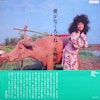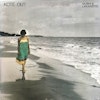Decades before the moneyed rush of tween acts and boy bands from Korea and their auto-tuned, chart-topping collaborations with Westerners such as Coldplay and Diplo, a similar synergy was attempted with Japanese artists and their U.K. and U.S. contemporaries. Such teamings, however, were not the stuff of K-Pop or the current mainstream’s most convenient creators. Within the sphere of ’70s and ’80s experimental electronic music coming out of Japan, and its oddly unique charting artists, the membership of bands such as Yellow Magic Orchestra (either the Beatles or the Kraftwerk of Japan, take your pick), the Plastics, and more forged a bond (and vice versa) with a wealth of then-new-wave names. From the B-52s and Talking Heads to M’s Robin Scott, Iggy Pop, Adrian Belew, and members of Japan, transcontinental-ity tethered Tokyo to London and New York City.
Few did it as well, or with such dynamic results within an electro-acoustic sphere, as Akiko Yano whose catchy and casually dramatic Ai Ga Nakucha Ne (“there must be love” in Japanese) we celebrate with a Re:Discovery.
Yano, or “Akko” as she was informally known, was no novice when she began her sixth studio album in 1982. More of a conversational jazz singer and pianist than pop star, her effortless theatricality and skills brought her the renown of being Japan’s answer to Kate Bush. Yano’s first predominantly self-penned album 1976’s, Japanese Girl, was a rough, jazzy, blues-funk affair—with hints of traditional native folk song—recorded with Little Feat in Los Angeles. The following year, 1977, Yano expanded her jazz palette into the progressive and improvisational with bassist-keyboardist Haruomi Hosono and session drummer Rick Marotta on her second album, Iroha Ni Konpeitou. It is around this time period where Yano’s personal and professional shores begin to shift, as not long after recording with the singer, Hosono drops the eponymous debut of Yellow Magic Orchestra, a visionary album from his electronic trio costarring Yukihiro Takahashi and Ryuichi Sakamoto, the latter of whom Yano marries in 1982. YMO and Yano played several co-world tours, as well as acting as her backing band for 1980’s Gohan Ga Dekitayo. With that 1980 album and its immediate follow-up, 1981’s Tadaima, again with YMO by her side, singer-musician Yano moved toward towering electro-pop, with Moroder-esque sequencing and lush orchestration, yet with an ardent avant-garde edge.
By 1982, things again were shifting for Yano. Yes, she married Sakamoto and found in him an empathetic producer keen to use his powers and prowess toward open orchestral movements and synthetic atmospheres. But, on Ai Ga Nakucha Ne, rather than solely use the fellowship of YMO as her backing musicians again, Sakamoto brought Yano to London’s AIR Studios to work with his new friends in Japan—the band—David Sylvian, Mick Karn, and Steve Jansen, as well as their engineer Steve Nye.
Beloved for their layered, texture-heavy synthphonics, Jansen’s spare, intuitive drumming, Karn’s fluidly fretless bass and Sylvian’s wise and moody romanticism, by the end of the ’70s Japan had become an earnest, more artful counterpoint to Roxy Music, but without the lounge lizard pose. With 1980’s Gentlemen Take Polaroids and its epic, subtler follow-up, Tin Drum, Japan created a signature sound unlike anyone in synth-pop at that time, something dreamily, drearily dramatic and thrilling. Add that British band’s swirling, arid desert tones and crepuscular theatricality to Yano’s ever-growing pop songwriting skills, and the results were radical, diverse, and even humorous in spots, something that no one would ever accuse any Sylvian recording of being on its own.
Moving from the clipped, chipper “Aisuru Hito Yo” and the eerie Anglo-edgy likes of “Sleep on My Baby” and “What’s Got in Your Eyes,” to Karn and Jensen’s dynamic avant-rhythm workout on “Another Wedding Song”—if you stopped Ai Ga Nakucha Ne there, it would have been a classic, with Yano changing her voice, demeanor, and tone repeatedly and with jovial quirkiness to rival the skill and acuity of a Meryl Streep. To go with such thespian diversity, Yano never lets the listener forget her roots in improvisational jazz vocals as evident from her self-penned “Oishii Seikatsu” and “Onnatachiyo Otokotachiyo.”
Yet, producer Sakamoto, a squeakily menacing, high-register Yano, and the warbling baritone Sylvian hit upon the album’s end note: the diabolical lullaby “Good Night.” With a ticklish electric piano behind them, Akiko and Sylvian sound like a parallel universe’s “Somewhere Out There,” if out there was, indeed, out there. Yes, Sakamoto and YMO make their whimsical sequenced magic on Ai Ga Nakucha Ne, yet the collaboration between Sakamoto and Japan push Yano’s wild aesthetics to another level—something histrionic but even more nuanced than usual.
Ai Ga Nakucha Ne has been reissued by WeWantSounds and is available here.


